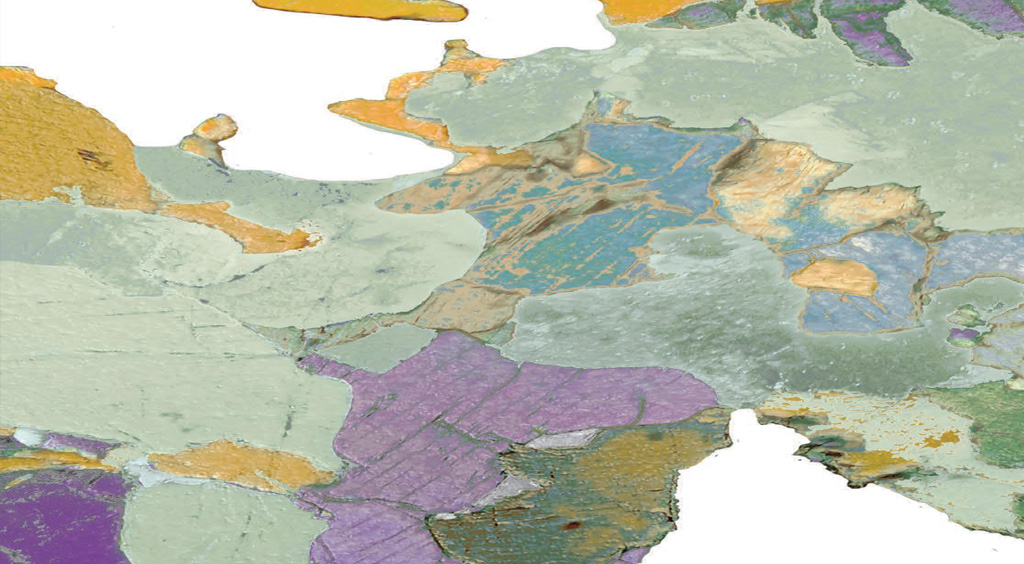– in progress
ANIMALS, PLANTS, ROCKS AND MINERALS: THE ISPRA COLLECTIONS > Towards a Multispecies Museum
Animals, Plants, Rocks and Minerals: the ISPRA Collections > Toward a Multispecies Museum is the new Museum of Civilizations presentation of the Paleontological and Litho-mineralogical Collections of the Italian Institute for Environmental Protection and Research (ISPRA). In the Hall of Honor on the upper floor of the Palace of Sciences, the exhibit introduced the history and research methods of these collections and initiates their progressive musealization, scheduled for completion in 2025, in complement to the visit path for the prehistoric collections.
The musealization project is a collaborative effort of ISPRA and the General Directorate of Museums of the Ministry of Culture, represented by the Museum of Civilizations, with technical support from the company Arte Lavoro e Servizi. For reflection on this project, the Museum of Civilizations has organized a series of in-depth activities in involving a plurality of experts and institutions, starting with the exhibit inauguration in the Hall of Honor.
The Paleontological, Litho-Mineralogical and Historical Collections of the Geological Survey of Italy collections consist of more than 150,000 animal and plant fossils, rock and mineral samples, survey records, scientific instruments, busts, portraits, memorabilia and documents. Transferred to ISPRA in 2008, the collections document the activities of scholars who, in line with the positivist thinking of the 19th century, considered the sciences to be indispensable in the emergence of modern industry, and placed humans and their control of the natural environment at the center of processes of historical and social development. The current global context demands reconsideration of such processes and for this aim, as with the prehistoric collections, the Museum of Civilizations proposes an interpretation of these collections as a premise for a multi-species anthropological museum, meaning one that documents the coexistences of animal, mineral and plant species and draws from this the knowledge that can contribute to resetting our relationships with the ecosystem, where humans must coexist with the other species.
Interweaving the natural and social sciences, humanities, art and speculative thinking, the proposed activities analyze the notions of “composting” as elaborated by philosopher and biologist Donna Haraway. Haraway relates this organic process of humification of matter by micro- and macro-organisms to the larger concepts of the earth’s soils, waste and fertility. By rediscovering the internally transformative capacity of matter, the Hall of Sciences thus reconfigures itself as a fertile and vital environment for exploration of the infinite potential arising from the alliance between all forms of the living and the genesis of hybrid and interdisciplinary forms of knowledge.
On the occasion of the inauguration, the monumental intarsia floor created by Mario Tozzi in the early 1940s, as part of the Palace of Sciences decorative program dedicated to protagonists and histories of scientific disciplines, also returns to shine, thanks to a new museographic lighting project. Tozzi executed the intarsia using solely Italian stone and marble, whose applications for architectural and decorative purposes are also documented in the ISPRA collections.
Interventions by three women artists also enter into dialogue with the ISPRA collections: works by Adriana Bustos (b. 1965, Bahía Blanca, Argentina), Marzia Migliora (b. 1972, Alexandria, Italy), and Otobong Nkanga (1974, Kano, Nigeria) bring the exhibition into action through the perspectives of imaginative dialogues between different species, suggesting the possibility of new experiences of the exhibits and connecting their histories to current climatic and geological emergencies. Bustos reconfigures past representations and cosmogonies of the Earth, deliberately amalgamating iconographic heritages from different environments and cultural geographies, as in the canvas introduced in the collection Map of Reincarnation (2021) in which she reinterprets a drawing by Athanasius Kircher, part of whose famous 17th-century wunderkammer has come to the Museum of Civilizations. Migliora elaborates a critical depiction of the planetary consequences of the fossil-resource economy, recounting the ecological impacts of the human drive for progress: the installation Multispecies score: ‘andante’ (2022), also acquired for the collection, consists of a sonorization of the collections themselves, made in collaboration with the sound-effects company Marinelli Studio Roma, bringing to life the echoes of the millions of lives concealed in these fossils, rocks and minerals that have become museum exhibits, reaffirming the inevitable connection of the human species with other living species. Nkanga instead turns to the hidden histories within geology to develop complex entanglements, sedimentations and multi-species systems that tell of the problematic relationships between humans and the environment, as in the drawings in the Social Consequences I and II series (2009).

